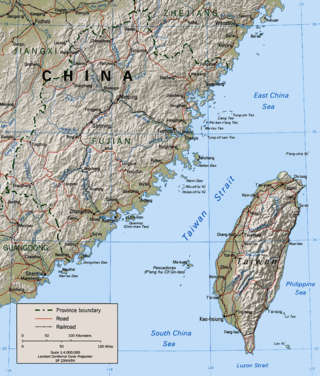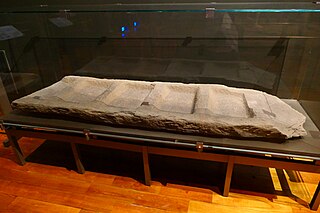Discovery
The discovery of Bubalus teilhardi was first published in 1932 by Chinese paleontologist Yang Chung-Chien and French geologist Pierre Teilhard de Chardin. The fossil specimens were found at Peking Man Site in Longgu Mountain, Zhoukoudian Village, Fangshan District, located approximately 48 kilometers southwest of Beijing. This site, also referred to as “Zhoukoudian Locality 1,” is the same location where the Peking Man skullcap was discovered in 1929. Subsequently, numerous findings of Bubalus teilhardi have been recorded at the Zhoukoudian Locality 13. [2]
The specific epithet “teilhardi” is named after the French geologist Teilhard, in recognition of his contributions to the study of vertebrate paleontology of China. [2] In addition to Beijing, fossils of Bubalus teilhardi have also been found in Shaanxi, Jiangsu, [3] and Zhejiang. Among the approximately ten extinct buffalo species in China, Bubalus teilhardi is the second-widest distributed species, surpassed only by Bubalus wansijocki . However, there have been no fossil discoveries of Bubalus teilhardi in South China so far. [4] [5]
In 1995, researchers from the National Museum of Natural Science, Taiwan salvaged a skull fossil of Bubalus teilhardi in the Penghu Channel. Based on the morphology of its skull, horn core and maxillary teeth, it bears a resemblance to the holotype described from the Zhoukoudian Locality 1 in 1932. The discovery of Bubalus teilhardi in the Penghu fauna indicates that during the Pleistocene, when the sea level dropped, Taiwan was connected to mainland China, allowing this species to migrate to Taiwan via a land bridge. [6]
Xihoudu is an archeological site located in the Shanxi Province of China. The site dates to the Paleolithic Age. In total 32 stone implements were found at the site.
Differing literary and colloquial readings for certain Chinese characters are a common feature of many Chinese varieties, and the reading distinctions for these linguistic doublets often typify a dialect group. Literary readings are usually used in loanwords, names, literary works, and in formal settings, while colloquial/vernacular readings are usually used in everyday vernacular speech.
I Lo-fen is a Taiwanese scholar and writer. She received her Chinese Literature Ph.D. from National Taiwan University. She has been an associate professor in the Division of Chinese in Nanyang Technological University’s School of Humanities and Social Sciences since July 2006, and was the Head of the Division (2014-2016). She had formerly committed in institutes like the National Taiwan University, Tamkang University, Fu Jen Catholic University, and the Institute of Chinese Literature and Philosophy at Academia Sinica. In addition, she was also a visiting professor at Stanford University in the United States and East Asian Institute at Sungkyunkwan University, South Korea. Her research expertise lies in Text and Image Studies, Su Shi studies, East Asian literature and intercultural exchanges in Classical Chinese, and Singapore literature, history, and arts studies. She is also a board member of the China Su Shi Studies Society, and an international board member of the Korea Society of East Asian Comparative Literature. She is the Founder and Honorary President of the "Text and Image Studies Society"(文图学会) that was official registered in Singapore on 18 December 2017. By integrating the history of Chinese literature and arts, she has accomplished a series of researches on poems in paintings and poetic imagery. She then proposed the idea of the “Text and Image Studies”(文图学) and focused on the relations, comparison and intertextuality between poems and paintings. From there, she has established her literary theory in arts creation and culture of aesthetics. She is also a column writer of Singapore Lianhe Zaobao (2007-), and she hosts podcast "Lofen says".
Ushinosuke Mori, who often published articles under pen names Mori Heiushi (森丙牛) and Mori (森), was a Japanese naturalist born in Gojo Muromachi (五條室町), Kyoto. A drop out of Nagasaki Commercial School (長崎商業學校), he went to Taiwan as an army interpreter and began to conduct research, until he ended up missing on board a steamship that was on Inner Taiwan route in 1926. The scope of his research not only included anthropological investigations on Taiwan aborigines, folklore objects, and archaeology, he was also well involved in collection and research of plants, making him a Taiwan naturalist during the early Japanese occupation period. Due to his fervent love and contributions to Taiwan aboriginal studies, he was praised as the “Leading researcher of Taiwan aborigines (臺灣蕃界調查第一人).” The specimens he collected were mostly preserved in the National Taiwan Museum.

Hokutolite is the only mineral named after a Taiwanese place among the more than 4,000 naturally occurring minerals in the world. Hokutolite is a rare mineral containing radioactive radium elements generated by the hot spring environment, and is currently found only in Beitou Hot Spring in Taipei City, and Tamagawa Hot Spring in Akita Prefecture, Japan. In Japan, the Ministry of Education, Culture, Sports, Science, and Technology has designated it as a "Special Natural Monument". In Taiwan, it is designated as a "Natural Cultural Landscape", and the Taipei City Government has designated a natural reserve in the Beitou River upstream of the Beitou Hot Spring Museum.

The Taiwan Music Institute, established in January 2002 and formerly known as the Research Institute of Musical Heritage and Taiwan Music Center, was renamed the Taiwan Music Institute in 2012 as a research, collection, exhibition and promotion organization for Taiwan music. It operates under the auspices of the National Center for Traditional Arts (NCFTA) under the Ministry of Culture. The Institute is located within the premises of Taiwan Traditional Theatre Center in Shilin District, Taipei City, and has a music archive on the second floor. The collection of books and audiovisual materials focuses on traditional ethnic music in Taiwan, supplemented by Asian, Pacific, and world ethnic music. Additionally, it showcases the archived musical artifacts of renowned Taiwanese musicians. The Institute welcomes public visits and offers reserved guided tours.

The Fujian–Taiwan relations, also known as the Min–Tai relations, refers to the relationship between Fujian, which is located in mainland China, and Taiwan, which is across the Taiwan Strait. Since the average width of the Taiwan Strait is 180 kilometers, Fujian and Taiwan are adjacent, similar in both climate and environment. Although the relationship between Taiwan and Fujian has changed with the development of history, the two places have maintained close relations in terms of personnel, economy, military, culture and other aspects. At present, Taiwan residents are mostly descendants of immigrants from mainland China, of which the southern Fujian ethnic group is the main group, accounting for 73.5% of Taiwan's total population. In terms of culture, language, religion, and customs, Fujian and Taiwan also share similarities.
Hou Youtang was a Chinese stratigraphic paleontologist and ostracodologist and a member of the Chinese Communist Party. She was a pioneer in micropaleontology research in China and the first Chinese scholar to work on Ostracoda fossils. She is also noted for her major contributions to the oil and gas industry in China.
Bubalus fudi is an extinct relative of water buffalo, which survived in the late Pleistocene.

Zoo-anthropomorphic jade earring is a jade ornament that dates back to the Neolithic Period in Taiwan. It is believed to have been worn as a pendant on the ears, given its notches and the evidence from unearthed contexts. The earring features two human figures with their hands on their waists and their legs spread wide apart. On top of their heads is a beast that resembles a cat, pig, or deer. The feet of the beast are connected to the heads. The feet of the human figures. While there are variations, including single-person or multiple-ring designs, such jade pendants are primarily found in Taiwan, making them highly unique.

Bell-shaped jade strung ornaments are ornaments made of bell-shaped jade beads made in Neolithic Taiwan. The bell-shaped jade beads are mostly made of nephrite. There are small holes on the beads that are presumably to string them. The jade beads are usually between 4 mm and 6 mm.

Frog-shaped jade ornament was unearthed in the archaeological site at Yenliao, Hualien, Taiwan in 1994 It can be dated back to 2,800 to 2,300 years ago. It is one of the most significant jade ornaments of the Huakangshan Culture during the Neolithic period. It is thought to have been used as a pendant.

The stone ladder, also known as a stone container or large stone trough in its early stages when its function was not clear, is an archaeological artifact discovered in Taiwan that is now believed to have a high probability of being used as a ladder based on use-wear, morphology, and computer simulation of data.
The Sakuma Foundation's Indigenous Artifacts Collection Project was a large-scale systematic acquisition program for the collection of artifacts of the indigenous peoples in Taiwan under Japanese rule. Between 1927 and 1929, the Sakuma Foundation was responsible for funding the acquisition of 1,760 artifacts from Taiwanese indigenous peoples, which were acquired by the Indigenous Pacification Section of the Department of Police of the Government-General of Taiwan.

Jiao, also known as Jiao-shang (郊商), Hang-jiao (行郊), and also known as Ding-shou (頂手) and Jiu-Ba-hang (九八行), was a commercial guild organization that spread throughout Taiwan during the Qing dynasty. The members of the organization were mostly ship merchants or merchants who settled in ports. In the middle of the Qing dynasty, the commercial function of Jiao was gradually declining due to the sedimentation
The Zuojhen Man is a human fossil. Due to being discovered in Tsai-Liao Creek in Zuojhen District,Tainan City, scholars named it the “Zuojhen Man.” Fossils of Zuojhen Man were once determined to be from about 20,000 to 30,000 years ago, earning it the title of being “Taiwan’s most ancient man.” According to a reexamination in 2015, it was determined to be from the late Neolithic period 3,000 years ago.

Taiwan Black Jade is a type of serpentine jade, primarily composed of minerals such as antigorite and magnetite. It exhibits colors ranging from dark green to black. It is found in the Fengtian area of Hualien County, Taiwan. It was discovered during the mining of Taiwan Jade in the 1960s and 1970s but was not at that time recognized as a new variety of mineral. In the 2010s researchers conducted studies and analysis that identified it as a new type of serpentine jade.
Chen Ren-he(陳仁和)(1922—1989), a native of Jibei, Penghu, is one of the few architects studied in Japan and is also one of the first generation of architects in post-war Taiwan.
Ma Pai-Shui, born Ma Shi-Xiang, was a painter and art educator. He was born in Shanchenggou, Benxi County, Liaoning Province, China. After settling in Taiwan in 1948, he served as a teacher for 27 years, exerting a profound influence on the education and development of watercolor painting in post-war Taiwan. In 1975, he retired and moved to the United States. He passed away in 2003.
"The Beauty of Taroko" is a large-scale ink painting created by Ma Pai-Shui in early 1999. It consists of twenty-four pieces of Xuan paper, each measuring 214 cm in height and 69 cm in width, forming a total dimension of 1656 cm in width and 214 cm in height. The painting is divided into six main themes, showcasing the distinctive seasonal landscapes of Taroko. In 2015, it was designated as a nationally important cultural artifact by the Ministry of Culture of the Republic of China.









